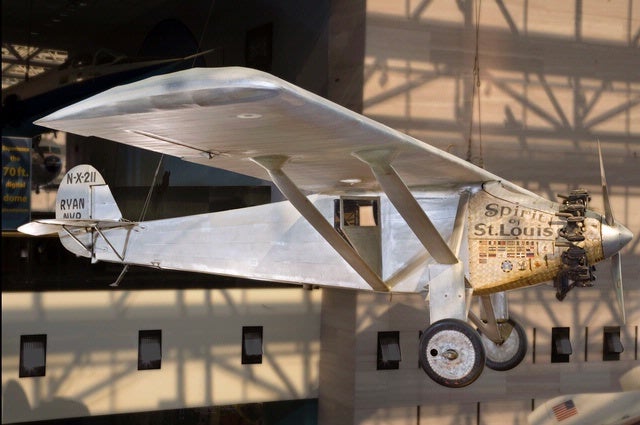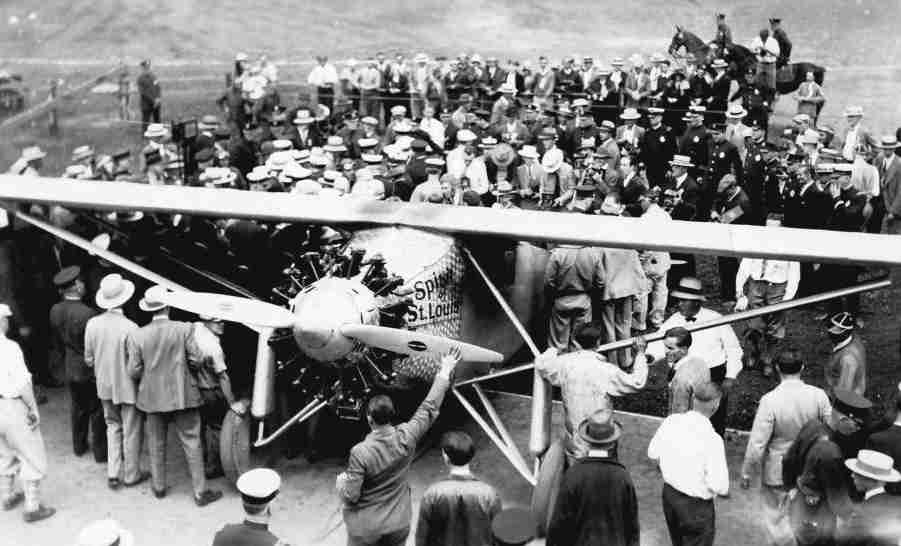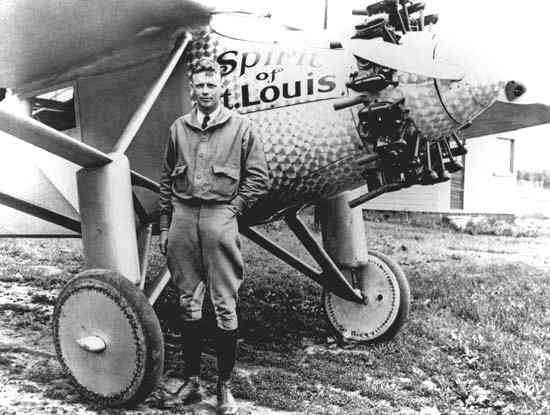 |
| Charles Lindbergh's Spirit of St. Louis. National Air & Space Museum, Washington, D.C. |
On May 20th, 1927, Charles Lindbergh stepped into the cockpit of the small, single-engine monoplane named the Spirit of St. Louis for a daring attempt to fly from New York to Paris non-stop ("Smithsonian"). Even more challenging, Lindbergh would be making the trip alone, with only the "Spirit" as company. Less than thirty-four hours later, Charles Lindbergh safely landed in Paris, with a flight log of over 3600 miles. It would be the first non-stop, solo, transatlantic flight in aviation history.
 | |
| The Spirit of St. Louis and Charles Lindbergh, Paris, France 1927 |
Aside from my interests in the Smithsonian, I have a special curiosity in things that defy explanation and are deemed "paranormal". I recently read a book entitled, "The Third Man Factor: Surviving the Impossible", written by John Geiger. It is a series of narratives describing desperate and severe circumstance that threatened the life of the subject. One of these narratives was by Charles Lindbergh himself, written in his journals during the famous 1927 non-stop flight from New York to Paris. While on board the Spirit of St. Louis, Lindbergh experienced moments of panic from ice building up on the wings, traveling through storms, and fighting the urge to succumb to sleep (84). Geiger writes, "He [Lindbergh] gradually became aware that, while his body demanded sleep, and his mind made decisions his body failed to heed, he had ceded control to a "separate mind", a force that he recognized as being something of himself, and yet not." During Lindbergh's twenty-second hour of the trip, he writes what he begins to feel around him:
the fuselage behind me becomes filled with ghostly
presences-- vaguely outlined forms, transparent, moving,
riding weightless with me in the plane. I feel no surprise at
their coming. There's no suddenness to their appearance.
Without turning my head, I see them as clearly as though in
my normal field of vision.
 | ||
| Ryan NYP Spirit of St. Louis (Cockpit). Photo: Eric Long |
I've never believed in apparitions, but how can I explain the
forms I carried with me through so many hours of this day?
Transparent forms in human outline-- voices that spoke with
authority and clearness-- that told me--- that told me--- but
what did they tell me? I can't remember a single word they
said (87).
 |
| Charles Lindbergh and his flying companion (Solar Navigator) |
What do you think? For a man who was awarded the Medal of Honor, and who had the skill to fly solo on a thirty-three hour flight back in 1927, do you believe what he saw? Do you think that inside that tight, small cabin, there were beings guiding him and helping him throughout his difficult journey? If so, one would be hard-pressed to agree that the Spirit of St. Louis flight was really solo. After reading that information willfully given by Lindbergh himself, it's exciting to see such an historical artifact as the Spirit of St. Louis in a different light!
Works Cited
ReplyDeleteCharles Lindbergh and His Flying Companion. Digital image. Charles Lindbergh and the Spirit of St. Louis. Solar Navigator. Web. 12 Mar. 2011. .
Charles Lindbergh's Flight and Return. Dir. Soviet Officials 1933/10/25. Adapt. The Federalist Party. Perf. Charles LIndbergh. YouTube - Broadcast Yourself. Web. 12 Mar. 2011. .
Geiger, John. The Third Man Factor: Surviving the Impossible. New York: Weinstein, 2009. Print.
Long/OIPP, Eric. Ryan NYP Spirit of St. Louis (Cockpit). Digital image. Spirit of St. Louis Photos - Rieker Incorporated. National Air and Space Musuem, Smithsonian Institute. Web. 12 Mar. 2011. .
Smithsonian. "Spirit of St. Louis - Milestones of Flight." Smithsonian National Air and Space Museum. Smithsonian Institute. Web. 12 Mar. 2011. .
Smithsonian. Spirit of St. Louis. Digital image. Ryan NYP "Spirit of St. Louis" Smithsonian Institute. Web. 12 Mar. 2011. .
The Spirit of St. Louis and Charles Lindbergh, Paris, France 1927. Digital image. Charles Lindbergh and the Spirit of St. Louis. Solar Navigator. Web. 12 Mar. 2011. .